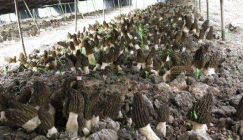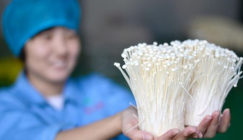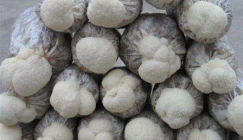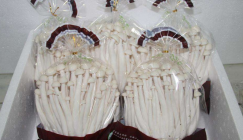1. Control temperature and humidity, prevent mushrooms from dying of frost and dryness: In Autumn Shiitake growing, after winter arrives, mushrooms have to fight with dry climate and cold current. When temperature suddenly drops to below 5 degrees Celsius and refuses to climb within a few days, young mushroom buds die of frost. Therefore, it is necessary for growers to spray high lipid membrane so as to help preserve heat, prevent frostbite and the invasion of diseases. When temperature drops to below 5 degrees Celsius, rise the temperature by flame path, and in order to guard against dryness, growers could spray water on ground of greenhouse or let water vapour enter into the greenhouse to lift relative air humidity.
2. Control the ventilation: While buds are still in young stage, be sure to eliminate direct ventilation on buds, or quick evaporation of water occurs on surface of mushroom bodies. During the growth period of young buds, it is feasible to spray high lipid membrane to form a protective film. In addition, cover the film of greenhouse, give the ventilation for a short time in windless weather and then timely cover the film and retain the moisture.
3. Control the temperature scale when hastening the occurrence of mushroom: The maximum temperature for growth of Shiitake bud is 20 degrees Celsius, and hence growers have to control proper temerature condition when hastening the occurrence of mushroom, meanwhile, maintain a short time, strengthen the ventilation and exhaust the moisture.
4. Never overlook gas damage: When temperature rises in greenhouse in winter, burning gas easily causes the death of young buds by reason of poisoning of Carbon Dioxide, Sulfur Dioxide and Carbon Monoxide, thus when heating up the greenhouse, growers have to adopt fire path, and exhaust waste gas out of greenhouse through the chimney. Lastly, be sure to termly ventilate the greenhouse to exhaust harmful gas.

 LATEST NEWS
LATEST NEWS

 MOST POPULAR
MOST POPULAR




